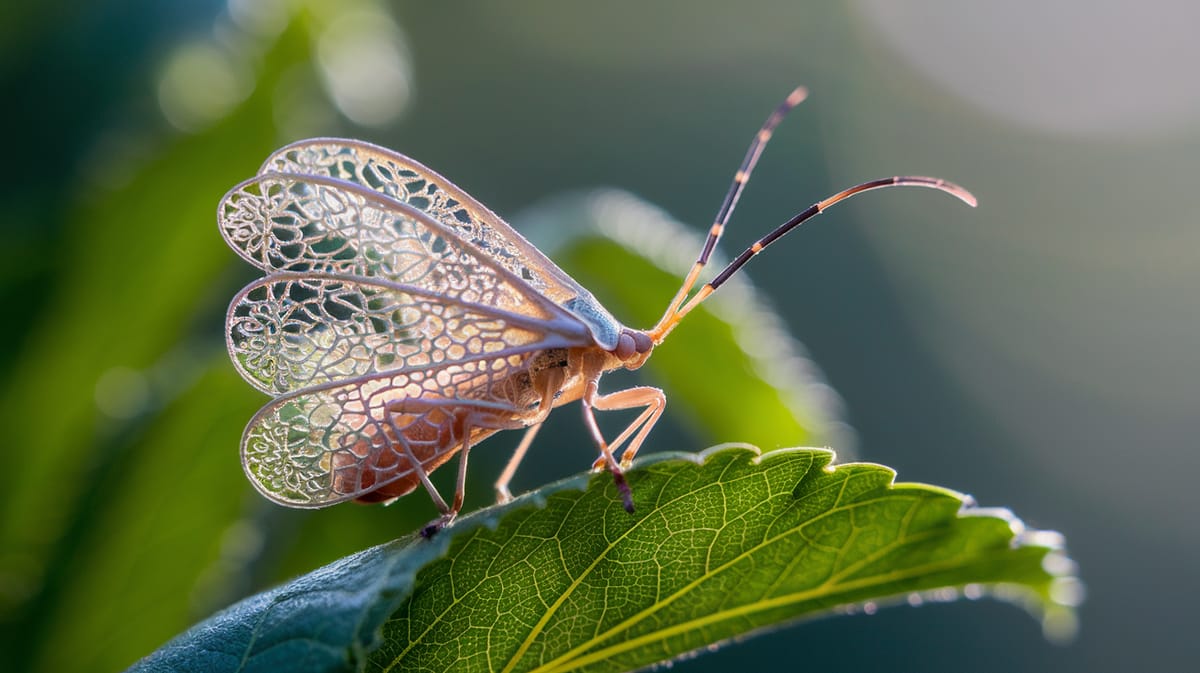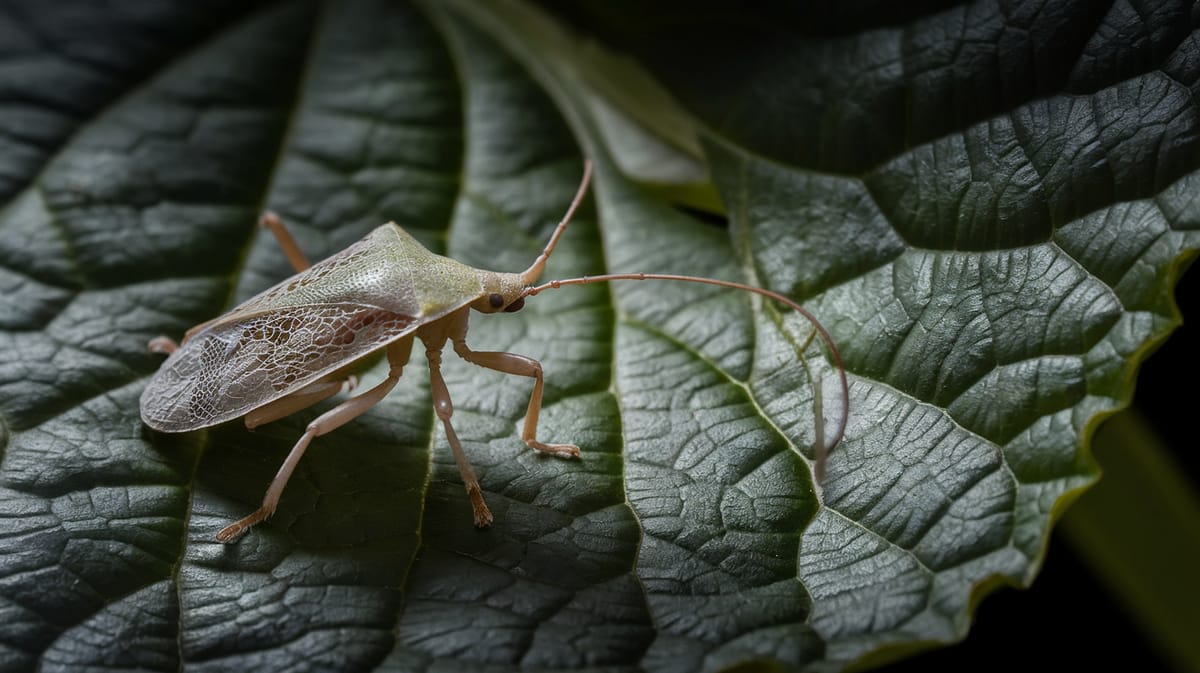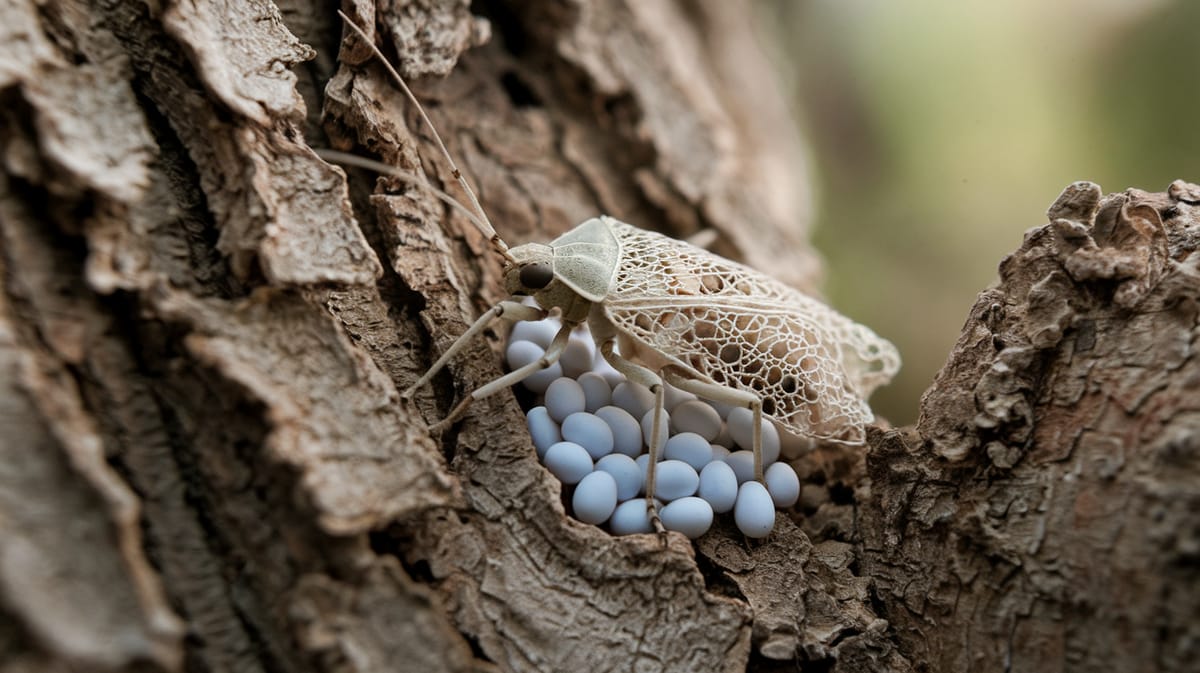Lace Bug
Lace Bug's intricate lace-like wings captivate with delicate beauty while it plays a vital role in controlling plant pest populations. These small insects are essential for maintaining ecological balance.

Key Insights at a Glance
Did You Know?
Taxonomy & Classification
Lace bugs are small, intricately patterned insects known for their delicate, lace-like wings. Their fascinating adaptations make them efficient plant feeders. Let's understand the evolutionary journey and classification of these remarkable herbivores.
Species Diversity
There are over 2,000 species of lace bugs, found across the globe, thriving in diverse environments from forests to urban areas.
Evolutionary Resilience
Originating around 40 million years ago, lace bugs have adapted to survive various climatic changes, maintaining their niche as specialized plant feeders.
Lifecycle and Growth
A remarkable journey of transformation from Egg to Adult.
Egg
Eggs are laid in clusters on leaves, often covered with a protective coating, to shield them from predators and environmental stress.
Nymph
Nymphs hatch and resemble small adults, undergoing five molts to gain size and develop wings before reaching maturity.
Adult
Adults emerge with fully developed wings and distinct lace-like patterns, focusing on feeding and reproduction to sustain the population.
Dietary Habits
A specialized sap-sucker, this insect feeds predominantly on plant juices, utilizing piercing mouthparts adapted for efficient extraction.
| DIET TYPE | DESCRIPTION |
|---|---|
| Primary Diet | Primarily consumes plant sap from leaves of trees, shrubs, and herbaceous plants, causing distinctive damage to foliage. |
| Secondary Diet | Occasionally exploits other plant parts, like stems and flowers, for supplementary nutrition when leaf sap is scarce. |
| Occasional | Rarely feeds on pollen or honeydew produced by other insects, taking advantage of these resources when necessary. |

Behaviour and Adaptations
Discover the fascinating adaptations that make the Lace Bug a unique marvel of nature.
Intricate Camouflage
Lace Bugs blend into leaves, using their lacy wings to avoid predators.
Host Plant Specialization
Feeds on specific plants, thriving on select host species.
Defensive Aggregation
Forms groups to deter predators, enhancing survival.
Ecosystem Impact
Maintaining ecological balance with Lace Bugs.
Natural Pest Control
Lace Bugs help manage plant-eating insect populations by feeding on them.
Food Source
They serve as prey for birds and other predators, supporting biodiversity.
Plant Health Indicator
Presence indicates plant stress or poor health, guiding timely intervention.
Conservation Challenges
Understanding and addressing the major threats to Lace Bug populations.
Chemical Exposure
Pesticides harm lace bug populations by disrupting their reproductive cycles.
Habitat Loss
Urbanization leads to loss of native vegetation crucial for lace bug survival.
Climate Change
Temperature shifts alter lace bug habitats, affecting their life cycles.
Frequently Asked Questions
How long do Lace Bug live?
Lace Bugs typically live for about 30 to 60 days. Their lifecycle includes egg, nymph, and adult stages, with the entire process, from egg to adult, taking around three to four weeks. Environmental conditions can affect their lifespan.
What do Lace Bug eat?
Lace Bugs feed primarily on the sap of plants. They use their piercing mouthparts to suck juices from the underside of leaves, often causing discoloration, stippling, or leaf drop. Common host plants include azaleas, rhododendrons, and sycamores.
Are Lace Bug poisonous?
Lace Bugs are not poisonous to humans or pets. They do not produce toxins nor pose a direct threat to people. Their primary impact is on plants, where heavy infestations can cause significant damage.
Are Lace Bug endangered?
Lace Bugs are not considered endangered. They are common in various habitats and are often found in gardens and landscapes. Their populations can fluctuate based on environmental factors and the availability of host plants.
What do Lace Bug symbolize?
Lace Bugs do not widely symbolize any particular concept or idea. In general, insects can represent transformation and adaptability, but Lace Bugs are mainly known for their impact on plant health rather than symbolic meanings.
Do Lace Bug bite?
Lace Bugs do not bite humans or animals. They are herbivorous, feeding exclusively on plant sap. Their mouthparts are adapted for piercing plant tissues, not human skin.
What color are Lace Bug?
Lace Bugs are typically pale, ranging from whitish to light brown. Their wings and body often have a lace-like appearance, giving them their name. The delicate, transparent wings can sometimes display intricate patterns.
Does a Lace Bug have wings?
Yes, Lace Bugs have wings. Their wings are transparent and intricately patterned, resembling lace. These wings are used for short flights between host plants, especially during the adult stage of their lifecycle.
What does a Lace Bug look like?
Lace Bugs are small insects, about 3 to 5 millimeters long. They have lace-like wings and a flattened body. Their wings and body often display a delicate, net-like pattern, giving them a distinctive appearance.
Is a Lace Bug an insect?
Yes, a Lace Bug is an insect. It belongs to the order Hemiptera, which includes true bugs. Like other insects, Lace Bugs have six legs, a segmented body, and wings, meeting the criteria for classification as insects.
Related Insects
Discover insects with similar characteristics to Lace Bug - including shared habitats, diets, and taxonomic classifications
Share this profile
Help others discover Lace Bug
